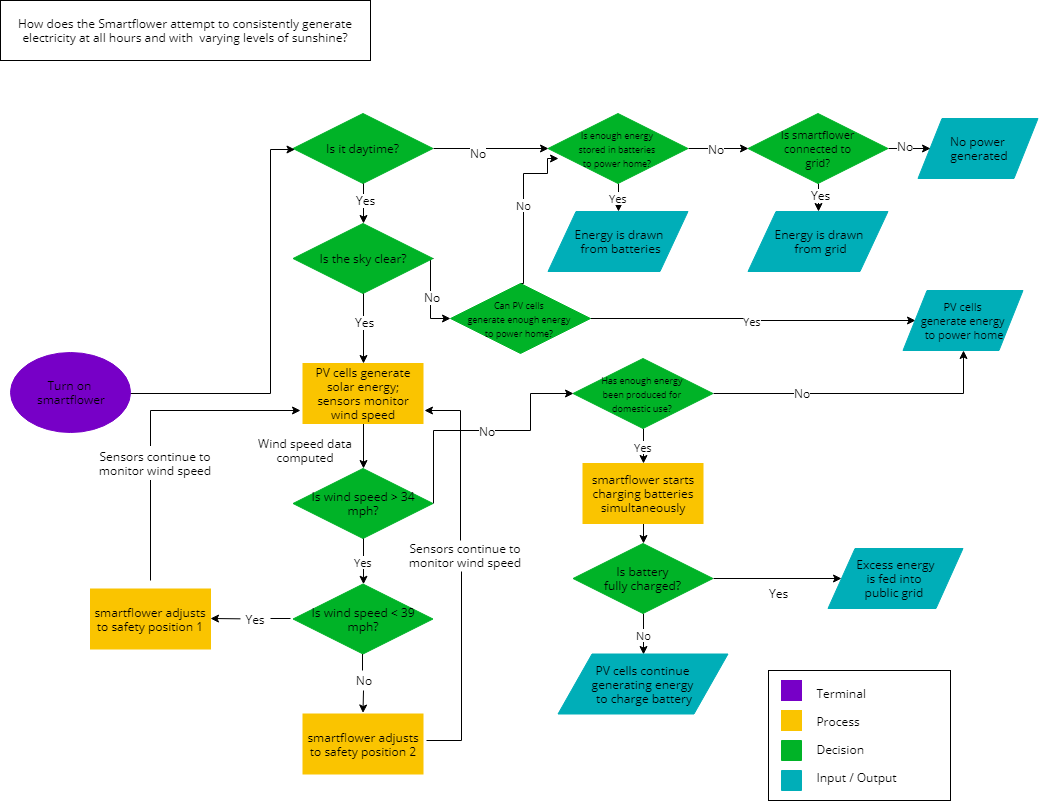Algorithm
The algorithm below illustrates the question of how smartflower works to consistently generate electricity at all hours and with varying levels of sunshine.
smartflower begins generating power once it has been turned on. If smartflower is not turned on, it will not generate any power. During the day, smartflower rotates in alignment with the sun at an angle of 90 degrees so that its photovoltaic (PV) cells generate solar power. At the same time, the wind guard monitors wind speed.
smartflower’s PV panels are rear-ventilated, enabling them to remain cooler than conventional rooftop solar panels. This ventilation contributes to higher levels of output and increased consistency of operation. Once smartflower’s PV cells produce enough energy to power the building to which it is connected, its batteries will begin charging. Once the batteries are fully charged, excess energy will be supplied to the public power grid if smartflower is connected to it. Unlike rooftop solar panels that often only power a single building, smartflower offers the potential to feed energy into the public grid so other homes and businesses can benefit.
During the night or when clouds are blocking the sun, smartflower’s batteries may not contain enough energy to power the building. In these instances, energy will be drawn from the public grid. If smartflower is not connected to the public grid, the building will lack power if the sun is not shining and if the batteries are fully emptied. For this reason, users may want to consider connecting their device to the public grid as a back-up power supply.
As mentioned above, the wind guard monitors wind speed. If the wind speed is between 34 and 39 miles per hour, smartflower’s sensors direct it to security position #1 and it continues operation. If the wind speed is above 39 miles per hour, smartflower will fold into its night position with all panels turned toward the ground until the wind subsides.
One of smartflower’s distinguishing features is its combination of intelligent functionalities. In comparison with rooftop solar panels, smartflower’s sensors enable maximum capture of sunlight thanks to the movement and shape of its panels. Moreover, smartflower also has the capacity to optimize energy usage, leveraging its sensors to decide whether to power household appliances, charge its batteries, or feed the grid.
